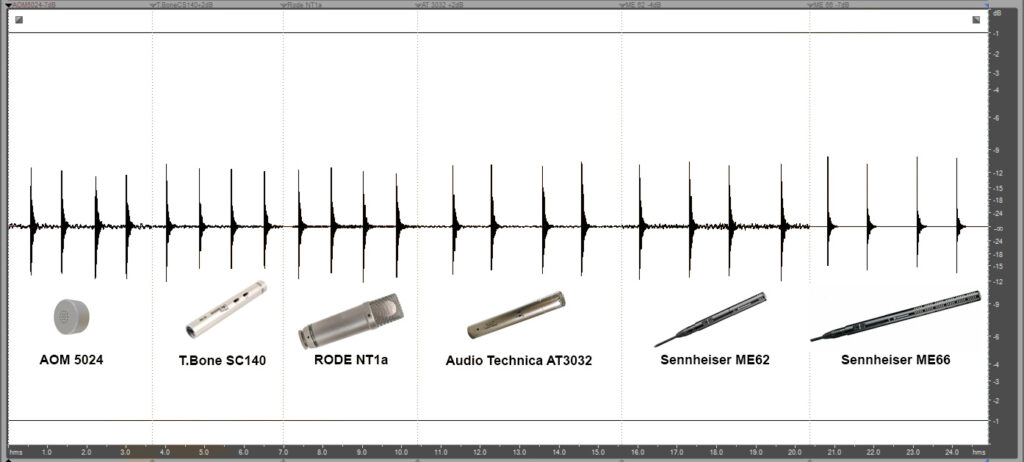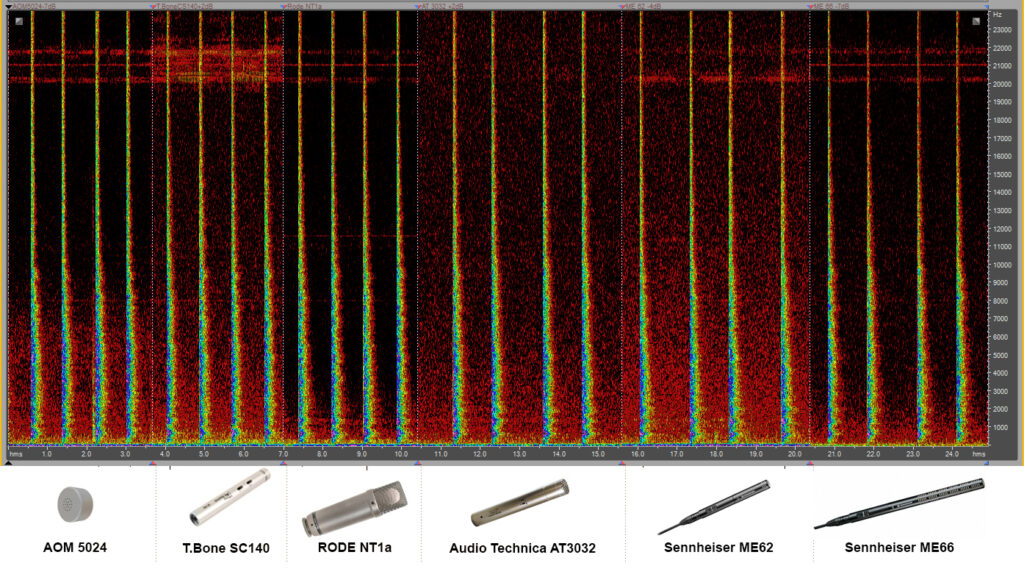Microphones Test AOM 5024 -T-bone sc140 – Rode NT1a – AT3032 – Sennheiser ME62 – Sennheiser ME66
I ran a practical test for six different types of microphone, using a Tascam dr100 mk3. The AOM5024 capsule was inserted in the center of a 12 cm diameter Plexiglas disc, while the other capsules are each related to its own microphone, as shown in the picture. The analog metronome was about 3 meters away from the microphones.
Below the list of the six types of microphone, with in brackets the dB added or subtracted to equalize the levels; as a reference I took the Rode NT1a signal.
No filter applied to the low frequencies.
AOM 5024 (-7dB)
T-BONEsc140 (+2dB)
RodeNT1a
AT3032 (+2dB)
Sennheiser ME62 (-4dB)
Sennheiser ME66 (-7dB)


The high frequency band from 20KHz and beyond, is related to the Modem signal that I inadvertently left on during the test: perhaps a future opens up for the T.BoneSC140 to be able to record the songs of some orthoptera in the high frequency band, with at least 96 KHz of sampling rate?

SC140 is susceptible to a slight RF interference. I replaced the FET (BF245A, I think) with 2SK118 GR (buyed from AliExpress) and interference disappeared. Self noise is a litle bit better now (0.5 … 1dB) or stays the same.
Thanks a lot Emil, I’ll try!